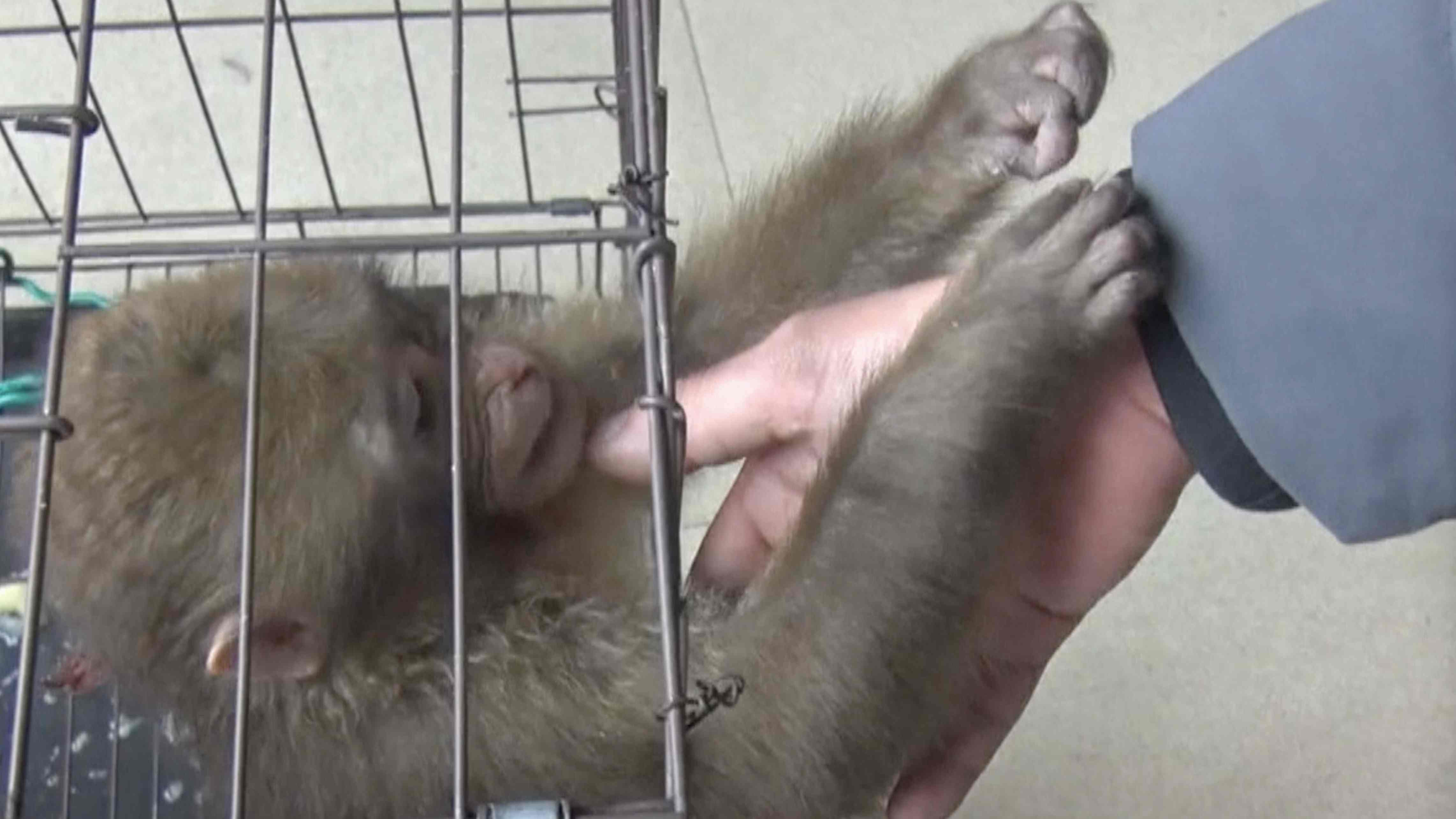
Nature
16:33, 17-Dec-2018
Rare Assam macaque rescued in southwest China's Yunnan Province
Updated
15:20, 20-Dec-2018
CGTN
00:53

A businessman named Gao sent a little monkey he saved three months ago to the local wildlife protection authority in southwest China's Yunnan Province on December 13 and was surprised to find the little creature is an endangered species under top-class state protection in China.
Three months ago, Gao spotted the injured monkey in Fugong County and brought it to home to take care of it. He helped the monkey recover and in the process developed a bond with the creature.
In order to get the monkey back to its habitat, Gao decided to send it to the local wildlife protection center in Fugong. To his surprise, the monkey was identified by authorities as an Assam macaque which is under first-class state protection in China.
According to the center, the monkey lacks the capability to find food independently now. So they decided to take care of it temporarily before it can be released to the wild.

A baby Assam macaque /VCG Photo
A baby Assam macaque /VCG Photo
Assam macaque is native to South and Southeast Asia. They mainly feed on leaves, fruit, and cereals. They usually live in mountainous evergreen broad-leaved forests, and the population is relatively small, about 10-15 in each group including males, females, and adolescents. However, groups of up to 50 individuals have been observed.
They have a strict hierarchy and a dominant monkey king. Males are driven out of the family once they reach sexual maturity. Large groups are also divided into small groups, with dominant males as the center. Females and young monkeys, as well as weak and submissive males, are mostly scattered in the periphery. The male monkey seems to have the authority to give orders.

A mother Assam macaque and her baby. /VCG Photo
A mother Assam macaque and her baby. /VCG Photo
Assam macaque is classified as "Near Threatened" by International Union for Conservation of Nature (IUCN) Red List of Threatened Species. The threats to this species include habitat degradation and fragmentation as well as poaching.

SITEMAP
Copyright © 2018 CGTN. Beijing ICP prepared NO.16065310-3
Copyright © 2018 CGTN. Beijing ICP prepared NO.16065310-3